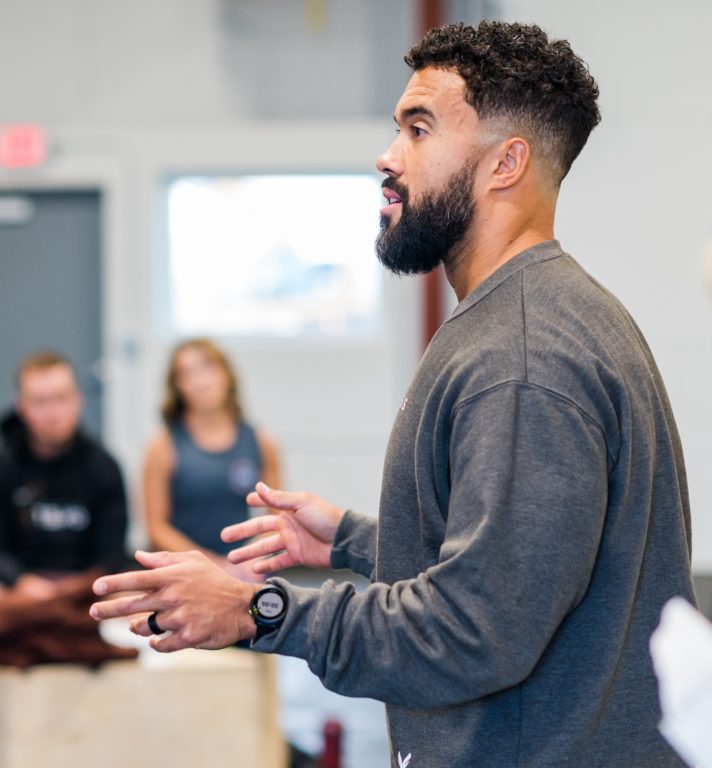Question: I’m a new trainer, and while I see a lot of people making movement errors in class, I have a hard time knowing who to give cues to and correcting people without messing up the flow of the instruction. How can I improve and know what to correct in a large class with such varying abilities?
Coaching is complex. Teaching, seeing, correcting, group management, presence, and attitude are all extremely important and also hard to balance. It is common to struggle with one or many of these specific qualities as a coach, a lot like our pursuit of fitness. We often have one area where we lag in comparison to others. Like our training, when we find an area we struggle in, we should simply amplify our focus and perhaps frequency of practice in that area.
The best time to give a cue is now. To wait to correct someone only gives poor movement mechanics a chance to be ingrained in their bodies and minds. Remember that a cue should be short, direct, and actionable. Using cues that encompass these traits is vital to maintaining the flow of your instruction in a group setting. This means that you can use verbal cues from anywhere in a gym to correct an athlete by simply knowing their name and being direct with your words.
Athletes are all very different and respond to different cues. The best thing you can do for them as a coach is to make your best attempts to improve their movement right now. Timing, flow, and execution of coaching a class will only come through trial, error, and refinement. Inevitably, there will be occasions when an athlete needs more attention than what can be given during group instruction. In this instance, you can effectively utilize transitions and build-up times to touch base with them further. If you are intentional with lesson planning and constantly receiving feedback from more experienced coaches, you will continue to improve!
Knowing what to correct or when can be intimidating. For new trainers, it is important to have a clear plan for coaching a movement. At the CrossFit Level 1 Certificate Course, you were coached through standard teaching progressions for four of the foundational movements we encourage coaches to learn, master, and use as often as possible. For any movement utilized in CrossFit, it is important for coaches to develop their own progressions. The CrossFit Level 2 Course and the Teaching Movement Course both take a deep dive into how to do this.
Within each step of a teaching progression, there should be a focus. As a movement is introduced to a class or singular athlete, it is a chance for a coach to assess the points of performance (POP) they just taught or help cue/correct the athlete to execute those POP. As coaches layer in the POP through their progression, they will identify what each athlete is struggling with and make a mental note that those athletes may need to be reminded about the cue when they reach the full movement. This is why progressions can be a big hack for helping new coaches with the seeing, cueing, correcting, and timing for each.
In summary, know what you want to see in a movement, and when you don’t see that thing, cue the best way to get it! When should you give the cue? Right now! While teaching, we can’t devote all our time to one or two athletes, so move through your progression and flow and continue to check back on those you were helping! You’ll improve with reps and intentional practice, and so will your athletes with your relentless help.
Have a question for a coach? Please submit that here.
About the Author

Adrian Conway (CF-L3) found CrossFit in 2011 and has since managed an affiliate, been part owner of an affiliate, competed at the CrossFit Games five times as an individual, on a team, and as a masters athlete, and has coached athletes to qualify and participate in the CrossFit Games. Adrian has been a member of the CrossFit Seminar Staff since 2013. He spends most of his time now coaching clients remotely and providing programming to affiliates through TRU (Train to Rise Up). He loves being involved with the sport and the methodology through our podcast channels and commentating at the CrossFit Games.
Ask a Coach: How Can I See and Correct Better When I'm Coaching a Large Class with Such Varying Abilities?